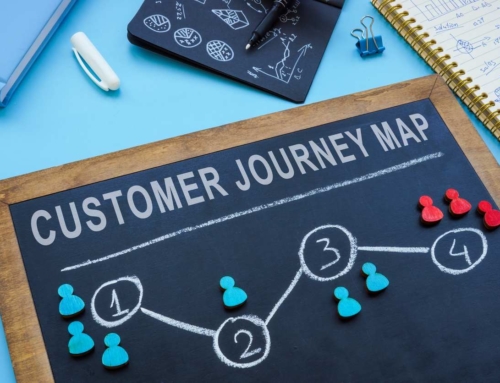What is the Process of Lead Generation?
What is lead generation?
Why is it important?
What is the process of lead generation?
Most companies today understand the importance of generating leads, but few know where to start or how to improve their existing process. Here, we’ll review the definition of lead generation, its importance, and the process.
Lead vs. Lead Generation?
The definition of lead generation varies from business to business, but typically it refers to the process of finding potential customers for your business or service. A lead, on the other hand, is anyone who has expressed interest in your company or product. This interest can be expressed in a number of ways, such as providing your company with their email address, phone number, or their social media information.
The Importance of Lead Generation
Today’s businesses are heavily reliant on lead generation, as it’s how they can increase the amount of traffic to their website and turn leads into paying customers, which helps the business earn a higher profit.
Without lead generation, businesses teams would have little idea of what their audience is looking for or what they’re attracted to. Additionally, they wouldn’t know how to stand out from their competitors and showcase their product or service in an effective way. Using lead generation, marketers can more effectively target their customer base and build an engaging website catered to their needs.
The 7 Steps of Lead Generation
While every lead generation process will look different depending on the business, this is what the process of lead generation looks like from start to finish:
1. Research Your Target Market
The first step to effective lead generation strategies is understanding your target audience. Who are your customers? What type of people are visiting your website? What are their pain points? How can your product or service benefit them? More insight into your customers means you can create content that is engaging, helpful, and will increase leads.
2. Create Engaging Content
One of the most effective lead generation tools is content. When you create content that is engaging, helpful, and shareable, you present your customers with a solution to their problem. Publish content in the form of blog posts, social media, photos, infographics, flow charts, or eBooks.
3. Promote Content Across Your Business Channels
Once you’ve created content, you’ll want to share it across your business channels. Publish it on your Facebook, Instagram, Twitter, LinkedIn, blog, or wherever your customers are most active. Allow existing or potential customers to find your content using Google search or while scrolling through social media.
4. Nurture Existing Leads
Once a lead has signed up for your email list or is in your lead management system, it’s time to focus on building a long-term relationship with them. Carefully guide them through the sales funnel or encourage them to buy. Send customized, unique emails that encourage them to try a free sample, download a product trial, or make another purchase.
5. Score Leads
Some leads are more valuable than others. Have your marketing and sales team evaluate each lead and determine which will benefit more from your services. Also pay attention to which leads are interacting more with your business, whether that’s by reading more content or visiting your website repeatedly. Focus your efforts on those leads that will have a great impact on sales and profit.
Ready to take your business to the next level? Let our call center experts show you how we've helped organizations just like yours seamlessly scale while lowering costs and increasing efficiencies.
You won't regret it.
6. Pass Leads to Your Sales Team
The first five steps of lead generation process flow chart are focused on marketers’ attempts to turn a subscriber into a lead. Now, it’s time for the sales team to turn a customer’s desire into an action. After someone has bought from you, it’s up to your salesmen and women to enrich a customer’s experience and keep them interested in your company long-term.
7. Evaluate Your Lead Generation Process
You’ll want to ensure that your lead generation strategies are as effective as possible and should be under constant scrutiny by you and your team. Continuously evaluate your process to see where leads go cold and how you can keep customers interested in your company. Marketing analytics is an important lead generation tool as it can help your team understand if benchmarks are being met and customers are completely journeying down the sales funnel.
Conclusion
Any good lead generation process will look different depending on the business and industry, but each has the goal of turning leads into paying customers. Be open to trying new ideas and practices so you can create a lead generation process that best caters to the needs and wants of your customers. Learn more about our lead qualification call center services.






![How To Get Leads for Insurance Sales [6 Best Methods]](https://roicallcentersolutions.com/wp-content/uploads/2021/06/iStock-1207861941-500x383.jpg)
